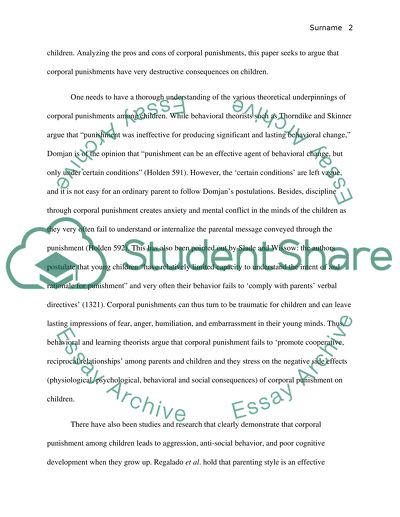Cite this document
(“Is corporal punishment effective or destructive for children. I think Research Paper”, n.d.)
Is corporal punishment effective or destructive for children. I think Research Paper. Retrieved from https://studentshare.org/psychology/1460703-is-corporal-punishment-effective-or-destructive
Is corporal punishment effective or destructive for children. I think Research Paper. Retrieved from https://studentshare.org/psychology/1460703-is-corporal-punishment-effective-or-destructive
(Is Corporal Punishment Effective or Destructive for Children. I Think Research Paper)
Is Corporal Punishment Effective or Destructive for Children. I Think Research Paper. https://studentshare.org/psychology/1460703-is-corporal-punishment-effective-or-destructive.
Is Corporal Punishment Effective or Destructive for Children. I Think Research Paper. https://studentshare.org/psychology/1460703-is-corporal-punishment-effective-or-destructive.
“Is Corporal Punishment Effective or Destructive for Children. I Think Research Paper”, n.d. https://studentshare.org/psychology/1460703-is-corporal-punishment-effective-or-destructive.


